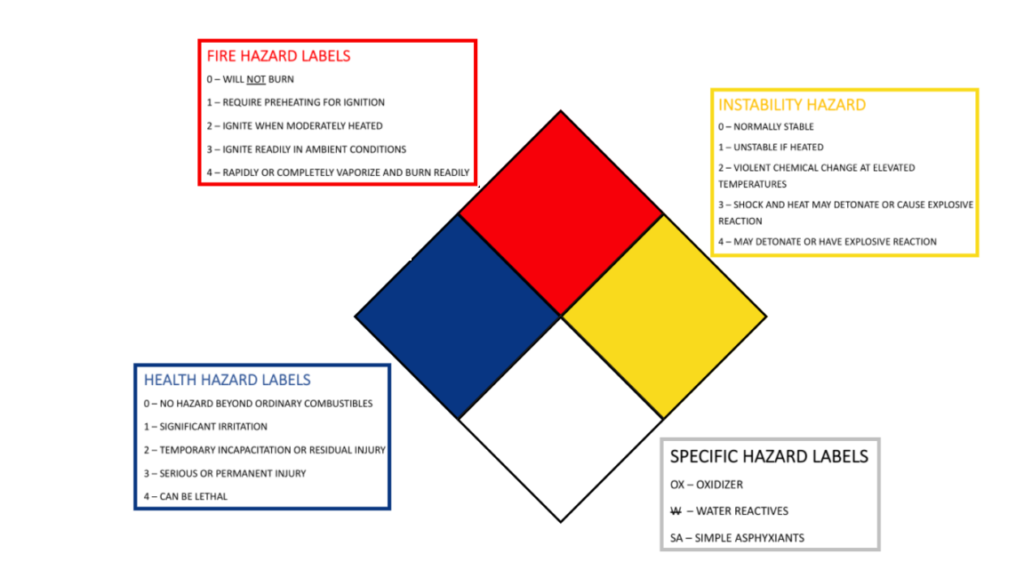Prepared in collaboration with Kara Steshetz
The purpose of this tutorial is to educate about the two main chemical hazard identification systems seen in industry and the importance of having these labels during emergency situations. The two chemical hazard systems are:
NFPA Diamond
Introduction
The NFPA Diamond was created in 1960. It is used by emergency personnel, like firefighters, to quickly identify any risks of hazardous materials involved in the emergency they are responding to. The diamond identifies any precautions or special measures emergency responders should take when dealing with the emergency situation. They are usually seen on trucks transporting chemicals, chemical storage containers, cylinders, or drums, and outside of laboratories.
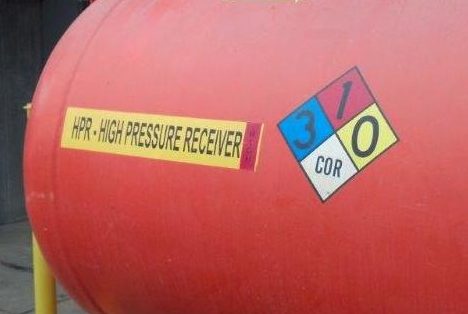
Components of the NFPA Diamond
Instructions on searching for SDS and NFPA Diamond information via CAMEO Chemicals can be found in the NFPA/Cameo Chemical Document.
NFPA examples
Below is the NFPA Diamond for Sodium (Na).
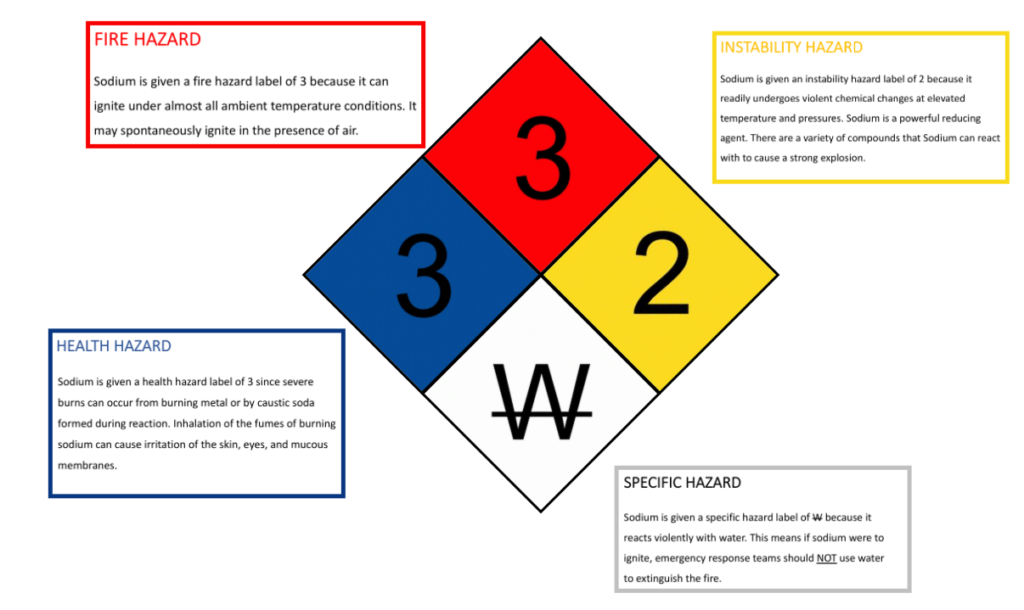
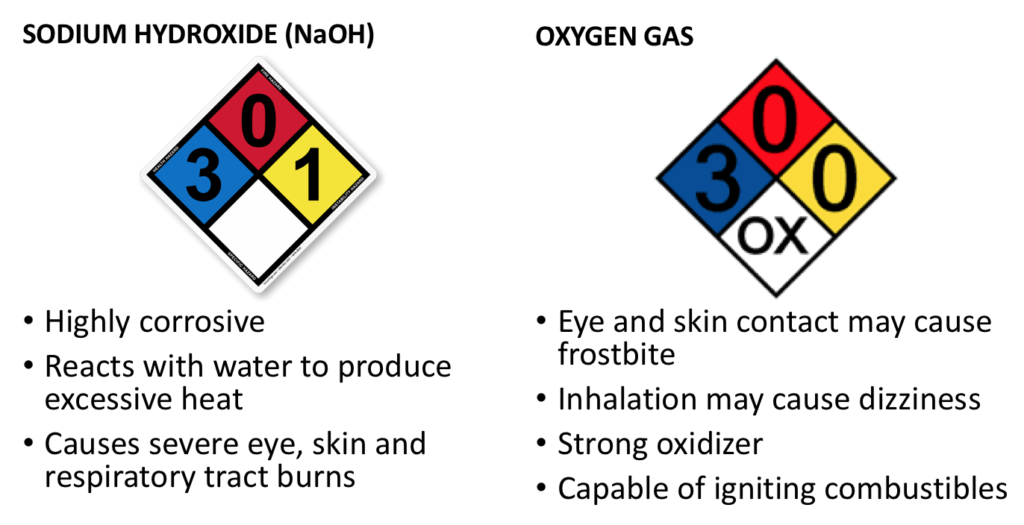
Globally Harmonized System
Jump to the NFPA Diamond Section
The Globally Harmonized System of Classification and Labeling of Chemicals, commonly referred to as GHS, is another hazard labeling system used by many other countries. The NFPA Diamond is most commonly found in facilities within the United States. As of 2014, there are 70 countries who participating in this labeling system, including the United States. It is not legally required to use the GHS or the NFPA labeling systems, but it is required that chemical containers do have some sort of hazard identification on them that comply with the HazCom 2012 standards developed by the Occupation Safety and Health Administration (OSHA). The GHS labeling system makes the import and export of chemicals easier and safer. The GHS system uses three categories of hazards rather than four like NFPA uses. The three different categories are flammables, health hazards, and environmental hazards, which have a variety of sub categories.
GHS uses 9 different pictograms, as shown below, that are placed on containers to identify the hazard of the chemical being stored in the container.
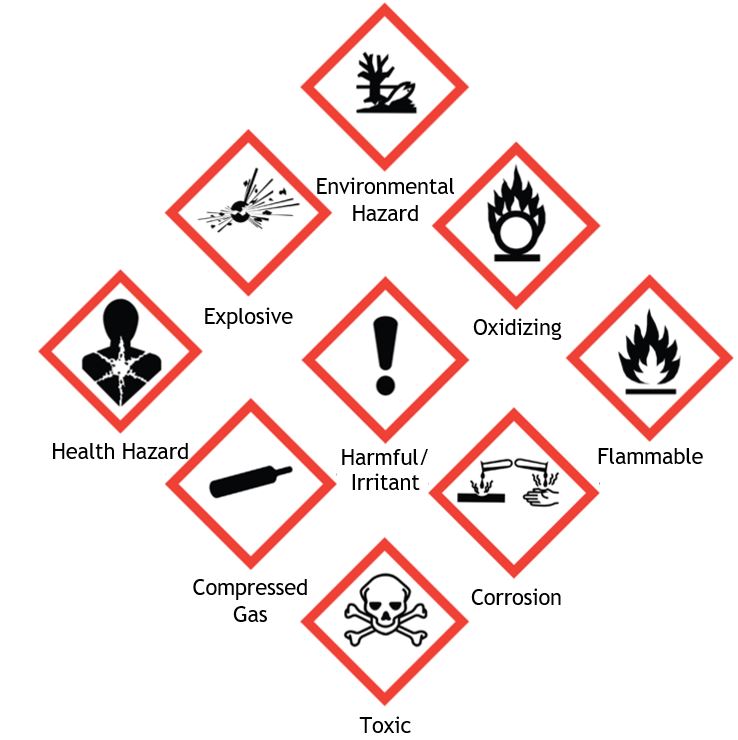
More information regarding the 9 different pictograms and their definitions can be found on the OSHA Hazard Communication Standard Pictogram Quick Card. Additionally, there are variations of the GHS pictograms; the rules of when to use these variations of the labels can be found on pages 38-42 of the OSHA GHS guide.
A document covering “Accessing GHS Information” covers finding the information via a Google Search for SDS and searching via Wikipedia.
Knowledge Check
There is a Chemical Hazard Assessment knowledge check quiz available.
References
- Oxygen Gas, Refrigerated Liquid, Oxidizing, N.O.S. (n.d.). Retrieved from CAMEO Chemicals: https://cameochemicals.noaa.gov/chemical/4145
- Sodium. (n.d.). Retrieved from CAMEO Chemicals: https://cameochemicals.noaa.gov/chemical/7794
- Sodium Hydroxide, Solid. (n.d.). Retrieved from CAMEO Chemicals: https://cameochemicals.noaa.gov/chemical/9073

